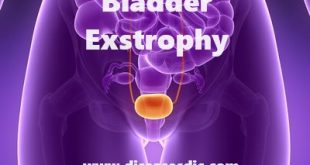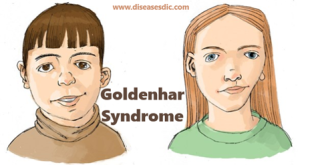Definition
Acrocallosal syndrome is a rare congenital disorder in which the individual has an absence or only partial formation of the corpus callosum. This is accompanied by a skull and facial malformations, and some degree of finger or toe malformations. Individuals may display motor and mental retardation. The cause of this genetic disorder is unknown, and the severity of the symptoms varies by individual.
The term acrocallosal refers to the involvement of the Acra (fingers and toes) and the corpus callosum, the thick band of fibers joining the hemispheres of the brain. Reported in both males and females, the cause of the disorder is unknown.
History
The acrocallosal syndrome (ACS) was first reported by Schinzel in a 4-year-old boy with postaxial polydactyly, hallux duplication, the absence of corpus callosum, macrocephaly and mental retardation in 1979. The name acrocallosal syndrome was proposed by Schinzel and Schimid in 1980. Since Schinzel’s original description, ACS has been described in over 37 cases till date.
Causes of Acrocallosal Syndrome
Mutations in the KIF7 gene have been found to cause the acrocallosal syndrome. Mutations in another gene, GLI3, can also cause features of this disorder. However, the signs and symptoms overlap significantly with those of a similar disorder called Greig cephalopolysyndactyly syndrome (which is also caused by GLI3 gene mutations), so acrocallosal syndrome resulting from GLI3 gene mutations is sometimes considered a severe form of that condition.
The proteins produced from the KIF7 and GLI3 genes play critical roles in the normal shaping (patterning) of many tissues and organs before birth. The proteins are part of a chemical signaling pathway called Sonic Hedgehog signaling. This pathway is involved in cell growth, cell specialization, and the patterning of structures such as the brain and limbs.
Mutations in either the KIF7 or GLI3 gene are thought to impair Sonic Hedgehog signaling, which has wide-ranging effects on development before birth. The roles of these genes in brain and limb patterning may help explain why mutations lead to agenesis of the corpus callosum, polydactyly, and the other features of the acrocallosal syndrome.
Symptoms
The list of signs and symptoms listed below:
- Mental retardation
- Seizures
- Enlarged head
- Widely spaced eyes
- Cleft lip
- Cleft palate
- Duplication of the big toe
- Extra fingers
- Extra Toes
- Hypospadias
- Undescended Testes
- An inguinal hernia
- Bipartite right clavicle
- Absent corpus callosum
- Congenital brain cysts
Complications of Acrocallosal Syndrome
Complications and sequelae of the Acrocallosal syndrome from the Diseases Database include:
- Polydactyly
- Corpus callosum hypoplasia
- Learning disability
- Megencephaly
Diagnosis and test
The diagnosis is usually made or confirmed at birth based upon a thorough clinical examination, identification of characteristic physical findings, and various specialized tests. Such testing may include x-ray studies; advanced imaging techniques, such as computed tomography (CT) scanning or magnetic resonance imaging (MRI); or other studies to help detect or characterize certain malformations that may be associated with the disorder (e.g., agenesis or hypoplasia of the corpus callosum, certain craniofacial abnormalities, polydactyly and syndactyly, etc.).
During CT scanning, a computer and x-rays are used to create a film showing cross-sectional images of internal structures. MRI uses a magnetic field and radio waves to create detailed cross-sectional images of certain organs and tissues.
A thorough cardiac evaluation may also be recommended to detect any heart abnormalities that may be associated with the disorder. Such evaluation may include a thorough clinical examination, during which heart and lung sounds are evaluated through use of a stethoscope, and specialized tests that enable physicians to assess the structure and function of the heart (e.g., x-ray studies, electrocardiography, echocardiography, cardiac catheterization).
Treatment and medications
- The treatment of acrocallosal syndrome, Schinzel type is directed toward the specific symptoms that are apparent in each individual. Such treatment may require the coordinated efforts of a team of medical professionals, such as pediatricians; surgeons; physicians who diagnose and treat neurological disorders (neurologists); physicians who specialize in heart disease (cardiologists); physicians who diagnose and treat disorders of the skeleton, joints, muscles, and related tissues (orthopedists); eye specialists; and/or other healthcare professionals.
- Specific therapies for individuals with acrocallosal syndrome, Schinzel type are symptomatic and supportive. For those with hydrocephalus, early surgery may be advised to insert a tube (shunt) to drain excess cerebrospinal fluid (CSF) away from the brain and into another part of the body where the CSF can be absorbed.
- In some instances, surgery may also be recommended to help correct certain craniofacial malformations, polydactyly and syndactyly, and/or other physical abnormalities potentially associated with the disorder. In addition, for those with congenital heart defects, treatment with certain medications, surgical intervention, and/or other measures may be necessary. The surgical procedures performed will depend upon the severity and location of the anatomical abnormalities, their associated symptoms, and other factors.
- Physicians may regularly monitor affected infants and children to help ensure prompt detection and early aggressive treatment of respiratory infections. In addition, in some instances, certain preventive measures may be recommended for those who may be prone to repeat respiratory infections. For affected infants who develop respiratory distress, treatment may include various supportive measures, including appropriate oxygen therapy.
- Disease management may also include supportive therapies to help ensure proper caloric intake and nutrition in those with feeding difficulties. In some cases, treatment with certain anticonvulsant medications may also be recommended to help prevent, reduce, or control seizures.
- Early intervention may be important to ensure that children with the disorder reach their potential. Special services that may be beneficial include special education, physical therapy, and/or other medical, social, or vocational services.
- Genetic counseling will be of benefit for affected individuals and their families. Another treatment for this disorder is symptomatic and supportive.
Prevention of Acrocallosal Syndrome
- Acrocallosal syndrome- Schinzel type Antenatal diagnosis is possible for better prevention of this genetic disorder.
- Furthermore, it is desirable to select a line treatment of HSCR to prevent infection of the ventriculoperitoneal shunt if the patient requires it.
- The Neural Tube Defects and Other Congenital Anomalies Use of Folic Acid for the Prevention of Neural Tube Defects and Other Congenital Anomalies.
- Antenatal diagnosis is possible for better prevention of this genetic disorder. Acrocallosal syndrome should be suspected in any child with polysyndactyly, the absence of corpus Callosum, mental retardation and hypotonia.
- Folic acid supplementation to prevent ACLS in further pregnancies was advised as ACLS is a milder variant of anencephaly.
 Diseases Treatments Dictionary This is complete solution to read all diseases treatments Which covers Prevention, Causes, Symptoms, Medical Terms, Drugs, Prescription, Natural Remedies with cures and Treatments. Most of the common diseases were listed in names, split with categories.
Diseases Treatments Dictionary This is complete solution to read all diseases treatments Which covers Prevention, Causes, Symptoms, Medical Terms, Drugs, Prescription, Natural Remedies with cures and Treatments. Most of the common diseases were listed in names, split with categories.







